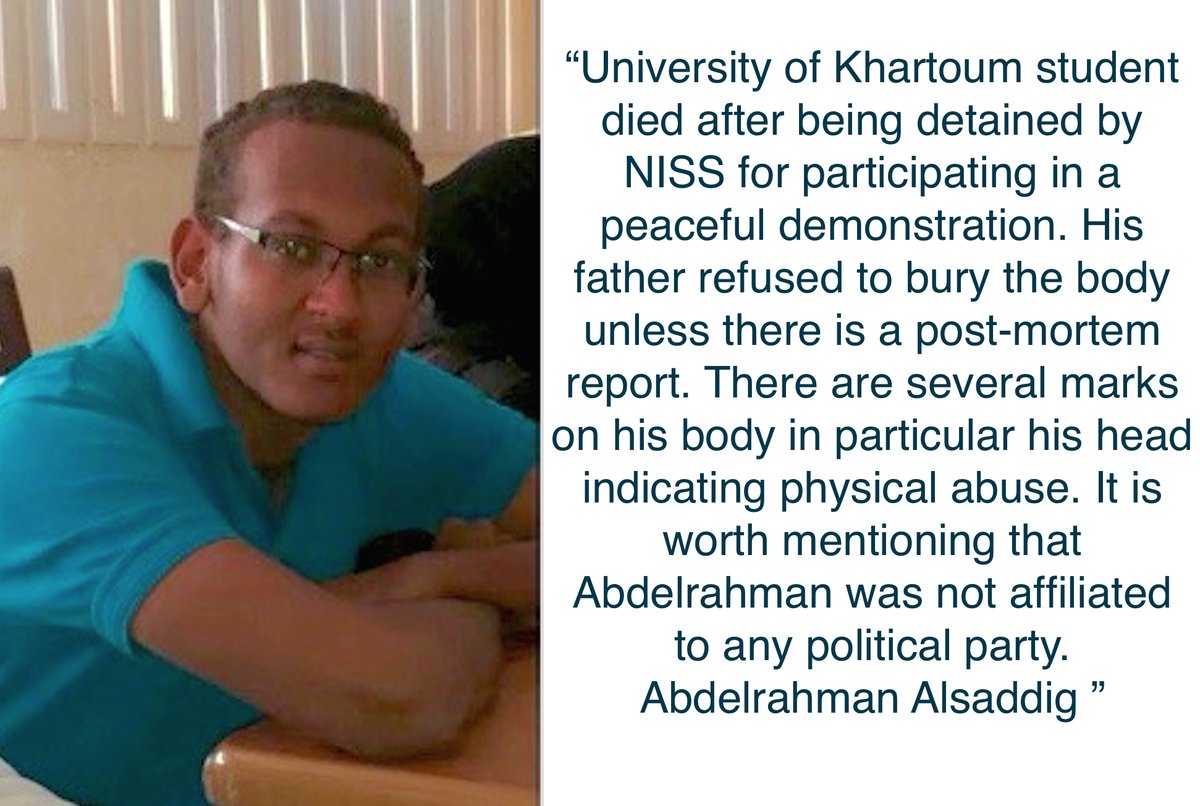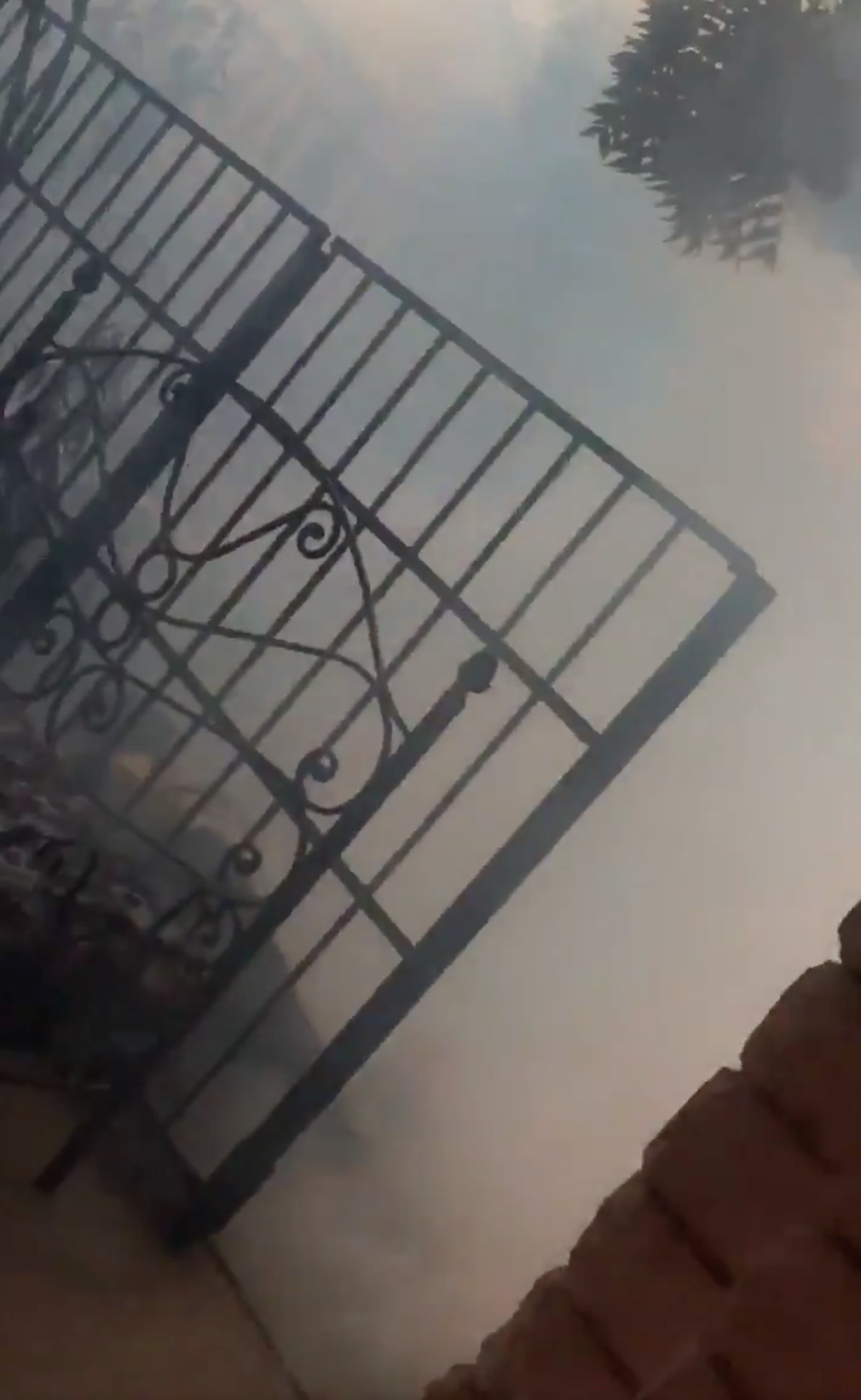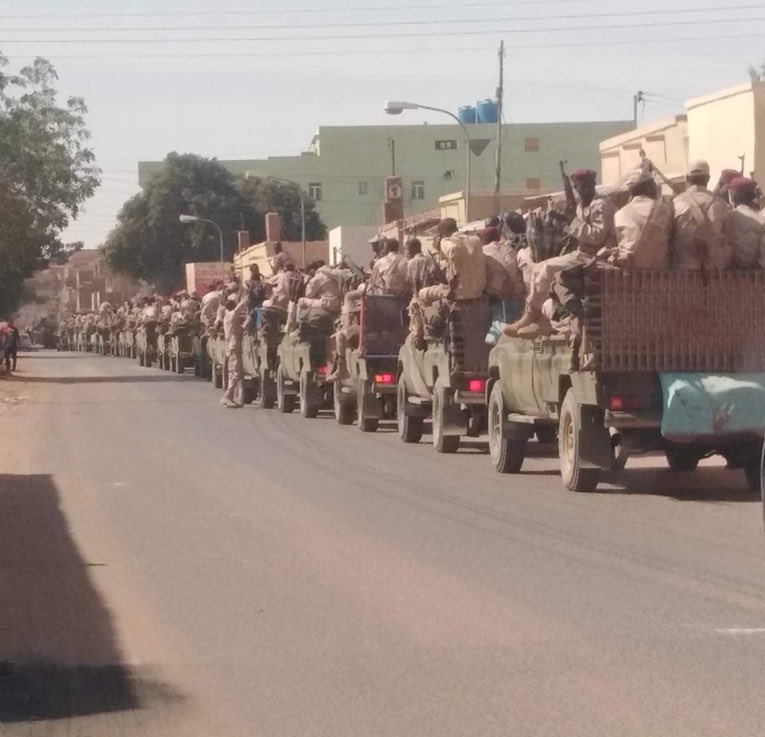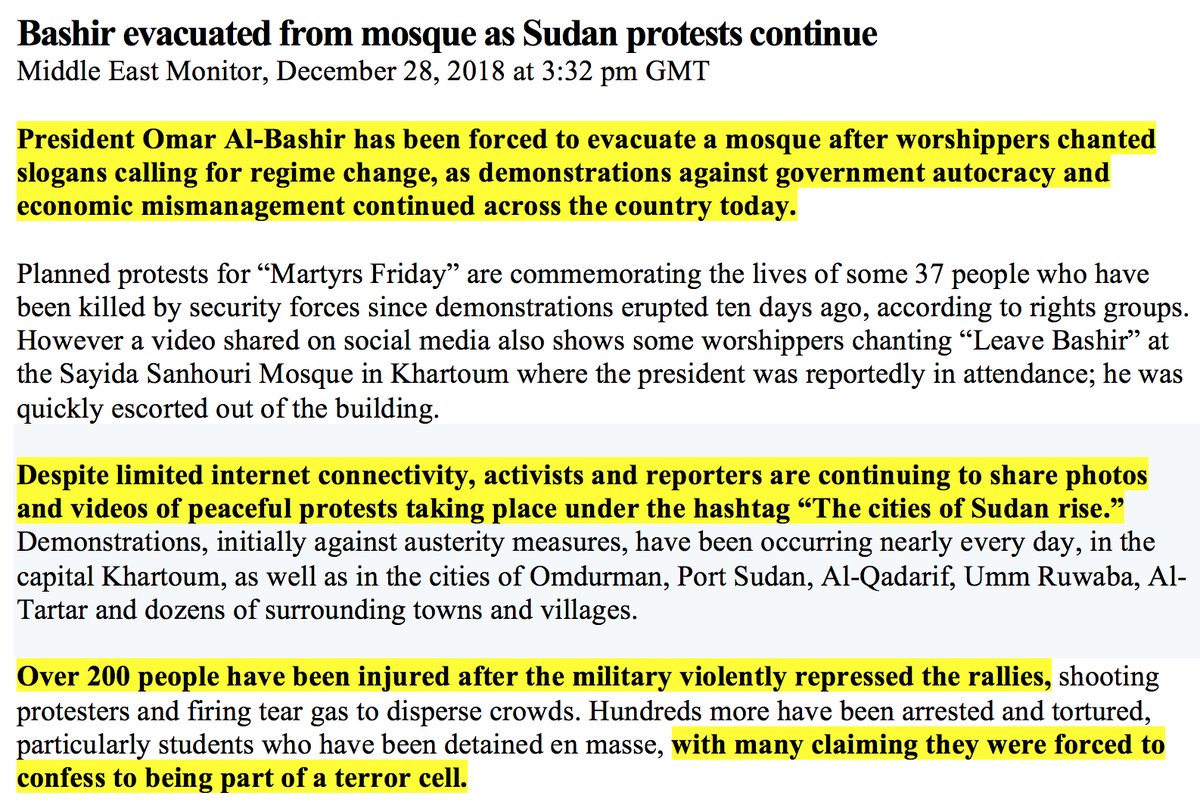Sudan Is Exploding in Protests: Continuing Updates, December 29, 2018
Eric Reeves | December 29, 2018 | https://wp.me/s45rOG-misc
December 27, 2018 update | https://wp.me/p45rOG-2kW
December 26, 2018 update | https://wp.me/p45rOG-2kH
First posted December 20, 2018, 10:45 EST | https://wp.me/p45rOG-2kh
Notably, as of December 29, 2018, there appears to be an even more strenuous effort by the Khartoum regime to shut down communication my social media: since the demonstrations of yesterday (September 28, 2018), there has been a sharp drop-off in communications from the most active reporters.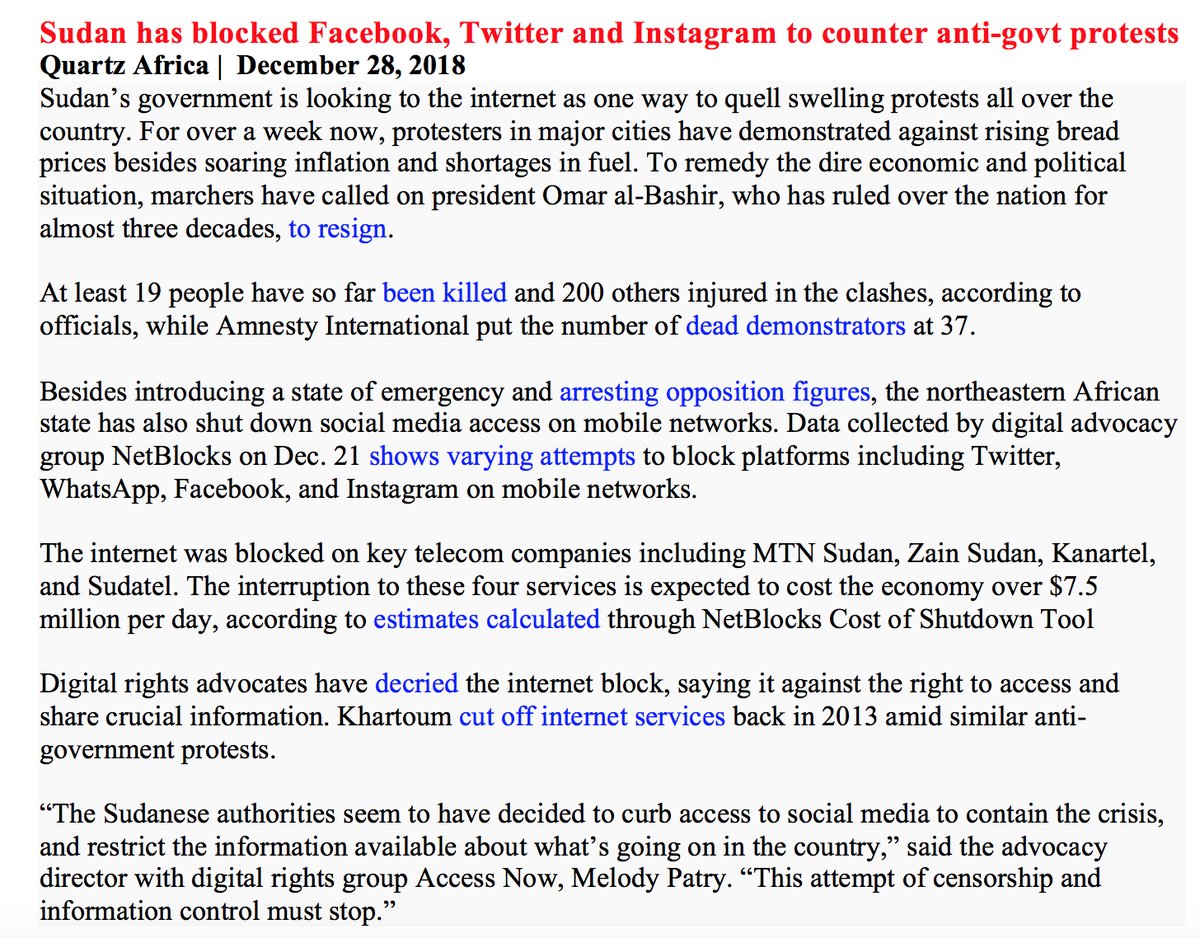
Additionally, the NIF/NCP regime continues to deploy its two remaining tactics with growing ruthlessness and brutality: arrests and violent repression of all public protests of tyranny, corruption, and economic collapse. Predictably, racism has also come to define these efforts, focusing primarily on Darfuris, long a convenient scapegoat for the regime (see below).
Much of this update consists of Tweets, re-Tweets (often in the form of screenshots, with highlighting), and other information gathered from what sources are still able to report. Radio Dabanga has been very active, and particularly important is Al Jazeera, which has a journalist on the ground in Khartoum.
• My own overview of the situation is conveyed at some length in a BBC news interview | https://www.bbc.co.uk/sounds/play/w172w25k9q918j4
Attributions below are made where possible, as well as dating—but these are often not fully known:
• Darfuris, predictably, are being made scapegoats amidst present demonstrations and civil unrest. Charges by regime against Sennar University students are preposterous on their face, including the charge that Israel’s Mossad trained them. Tortured into forced confessions, they were then displayed on TV: 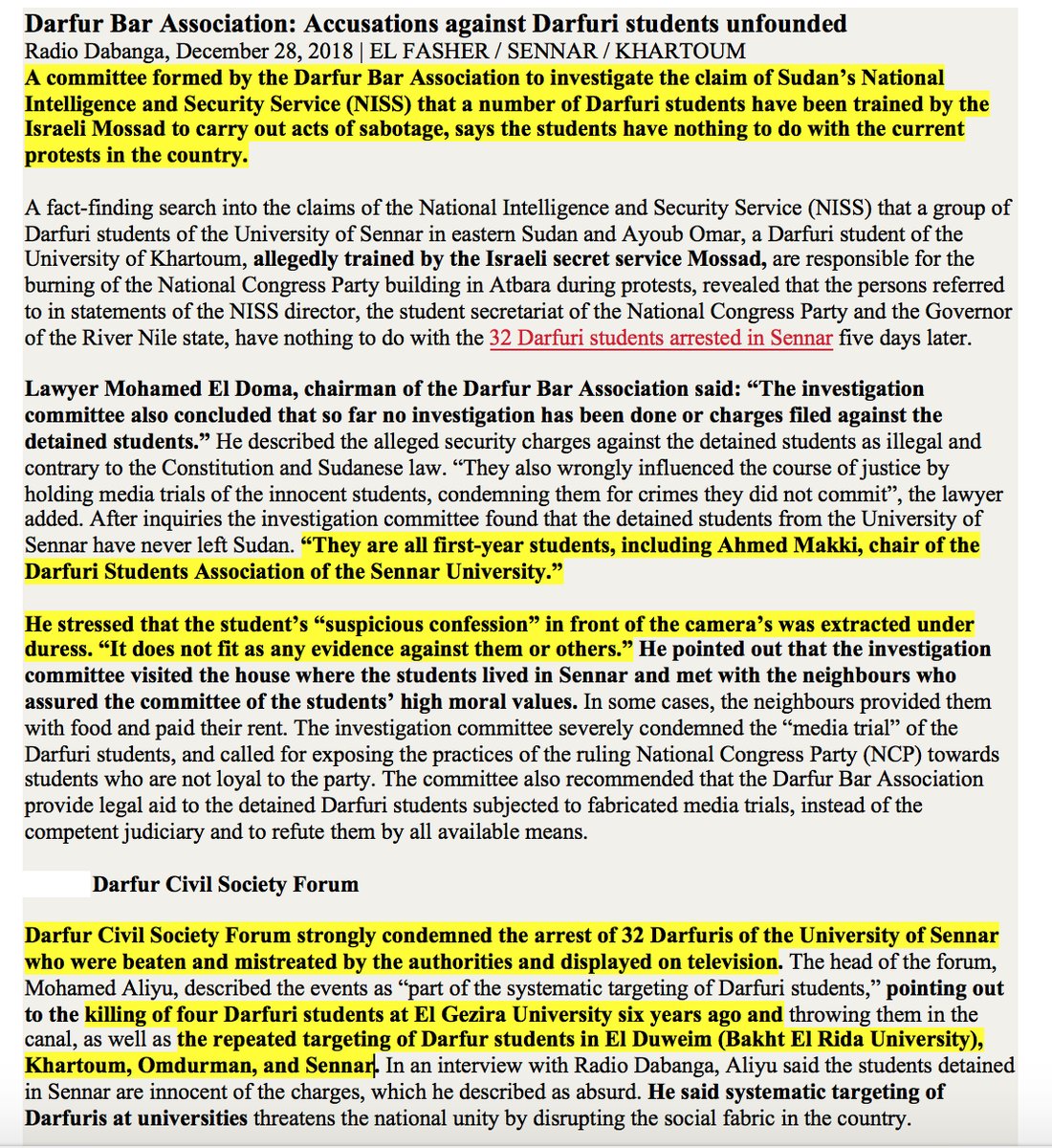
Darfuri students, i.e., “agents of Israel’s Mossad”
• From Suliman Baldo, senior analyst at the Enough Project (December 29, 2018; emphases in bold have been added):
I would like to draw your attention to the plight of dozens of Darfurian university students, whom the NISS has detained and subjected them to severe torture and then paraded them on national TV channels to publicly admit that they belong to organized sabotage cells. Salah Abdalla Gosh had claimed in a press conference on 21 December that the NISS was tracking some 280 Darfurian elements loyal to the SLM/Abdelwahid Nur who were trained by the Israeli Mossad and secretly traveled to Sudan from Nairobi shortly before the breakout of recent protests.
To make the case to a public that rightly dismissed these claims as yet another attempt to sow divisions in its ranks, the NISS raided on 23 December a house serving as a dorm to some 30 Darfurian students from Sennar University in Central Sudan. NISSS transferred the students on the same day to Khartoum and displayed them on 24 December on national T.V. as members of the alleged Mossad-trained cells. On Friday 28 December, the NISS raided another house in the Droshab suburb of Khartoum and rounded up another group of 9 students. The group was displayed last evening on national TV, sitting behind weapons and explosives the NISS claimed were found with them. There are unconfirmed reports of shootings at the moment of the NISS raid on the students’ residence and that one student was killed in the attack.
The NISS is trying to sow confusion among the public and observers alike by claiming that these alleged cells are responsible for the attacks on “public property” that occurred in some of the towns during the protests, mostly NCP headquarters and in isolated incidents police stations and the residence of North Kordofan Governor Ahmed Haroun. Regime propagandists have claimed in talk shows in international media that the shootings that felled dozens in Atbara, Gedaref and the tripartite capital were the responsibility of these Mossad trained cells, this in blatant contradictions of dozens of hours of footage of NISS, police and ruling party militiamen have been firing with live ammunition in the protesting crowds.
NISS is also using racism as a tool to divide and weaken the resolve of the Sudanese who are pressing for democratic change and the respect of their rights. The NISS bogus claims represent a repeat of a practice among Sudanese ruling elites who in many episodes since Sudan’s independence in 1956 ascribed racist motivations to Nuba, Southerners and Darfurians who rose to claim their rights. In the current case, many of the students paraded before the cameras haven’t even been to Khartoum in their entire young lives as testified by their colleagues.
I am concerned that these students are being subjected to ill-treatment and torture. Anyone with he ability to raise the profile of their case should do so with the hope that international condemnations would help shield them from further harm. [end]
• Arrests and violent repression are the only tools left to the Khartoum regime. The best international reporting on this is that of Al Jazeera, with a journalist on the ground in Khartoum. Social media blockages by the regime have increased.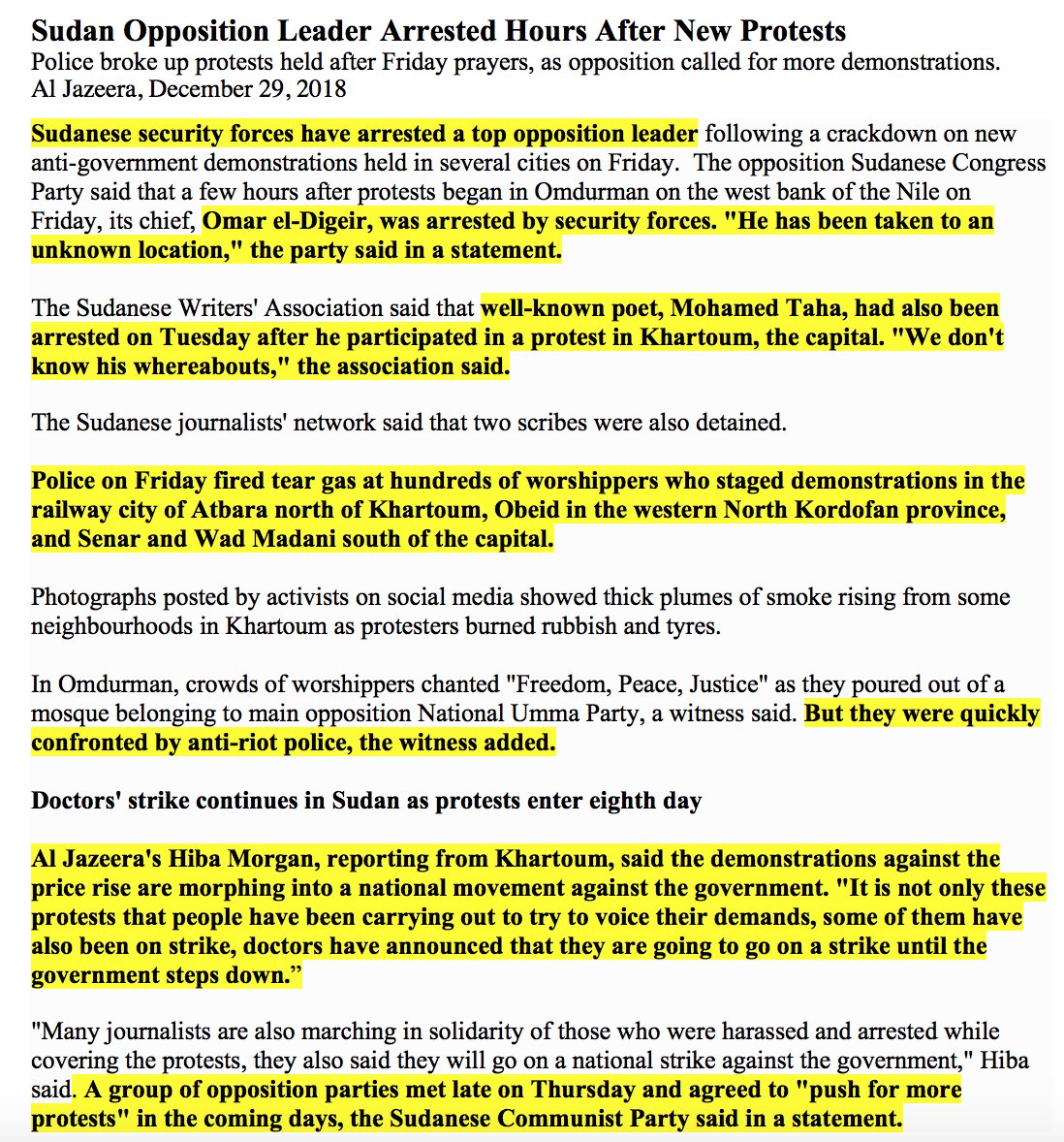
• Arrests are increasing, finally a sign of desperation on the part of the regime: more and more civil society leaders are stepping forward as arrests continue. Al Jazeera offers a useful overview here: 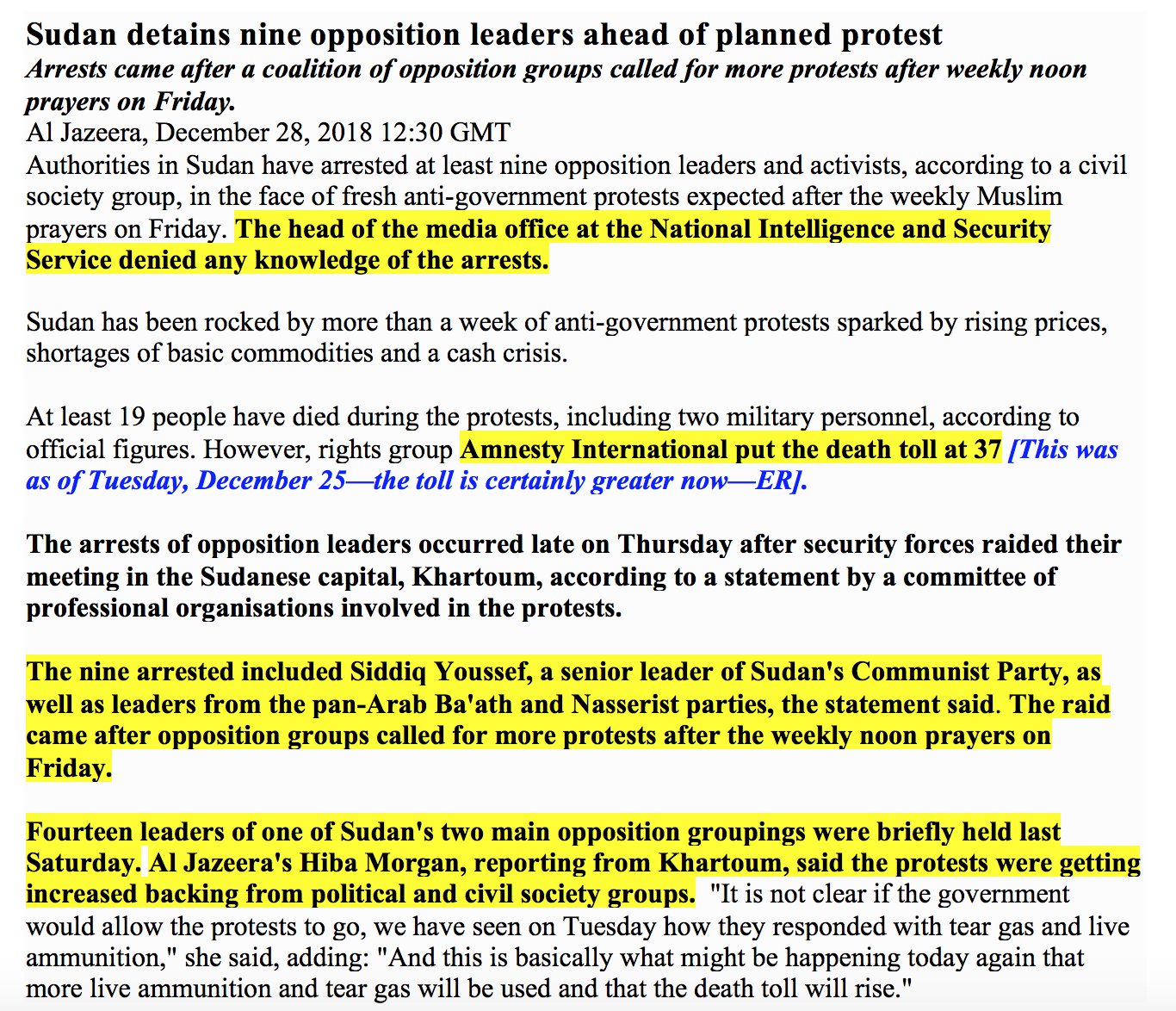
Other Reported Arrests/Shootings:
• One measure of the courage of those who appear and walk in demonstrations is the threat of torture and extra-judicial execution. We have no idea how many have suffered the fate of Abdelrahman el-Saddig (from a highly reliable Sudanese source):
• #SudanUprising Sudanese Congress Party Chairperson Omar al-Dukair was arrested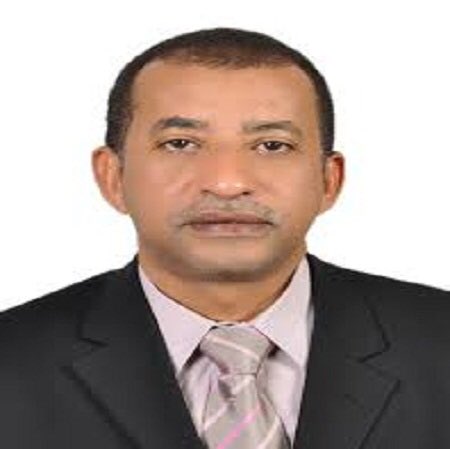
• Hala Y Alkarib @Halayalkarib Dec 25 On December 21, Tarig walked out of his home in Atbara—Sudan to protest peacefully for a better world a better country an hour later he was shot dead. This what we’re up against: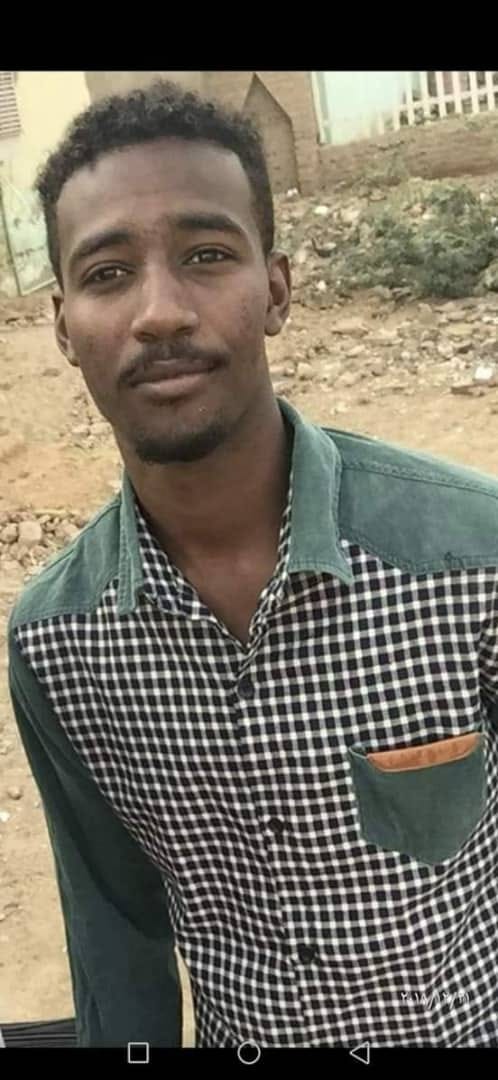
• Isma’il Kushkush @ikushkush Dec 25 Al-Sudani newspaper journalist Yassir Abdallah reportedly taken to hospital after being assaulted by security personnel who fire ammunition into newspaper’s office Sudan.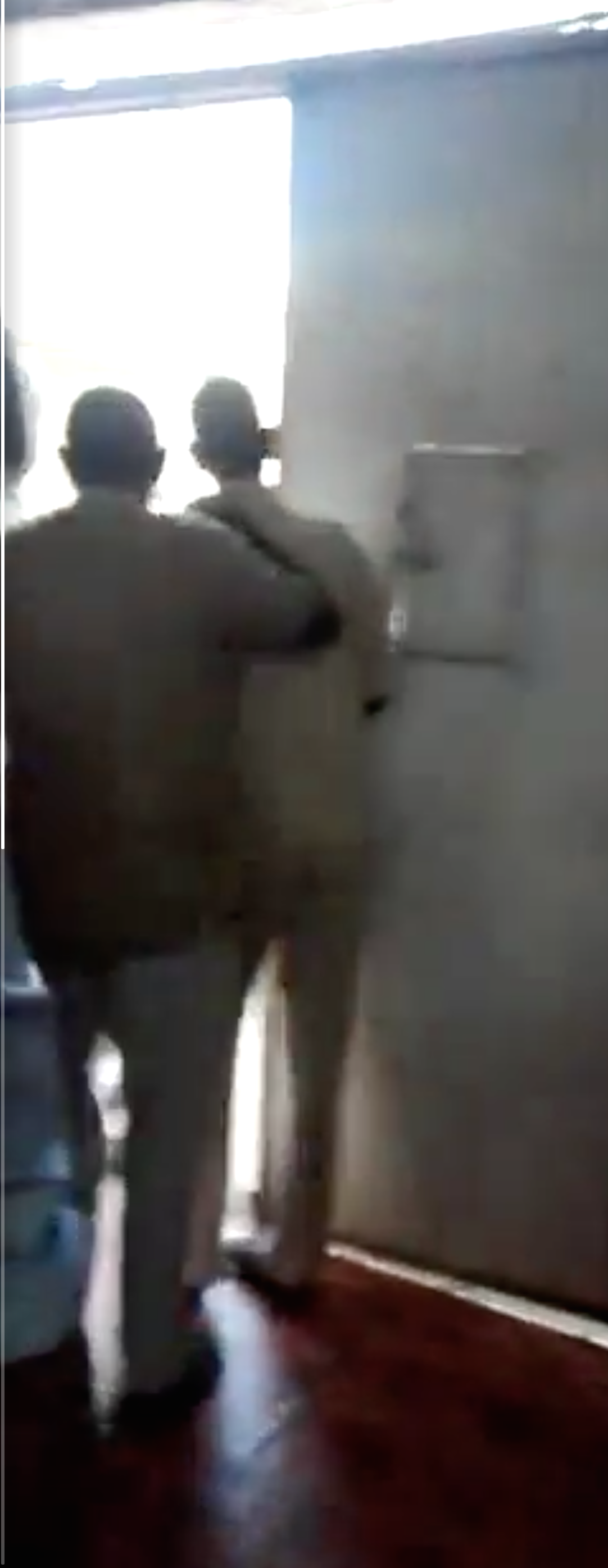
• The grossly indiscriminate use of tear gas is a major health threat in Khartoum and elsewhere. Children with asthma are at acute risk. The regime simply does not care, and gives every sign of using tear gas more indiscriminately and often preemptively. This is savagery…
Isma’il Kushkush @ikushkush Dec 28 | Protests reported in several #Sudan towns after Friday prayers on what activists have called “Martyrs Friday” including Khartoum, Omdurman, Atbara, El-Obeid and police reportedly respond with tear gas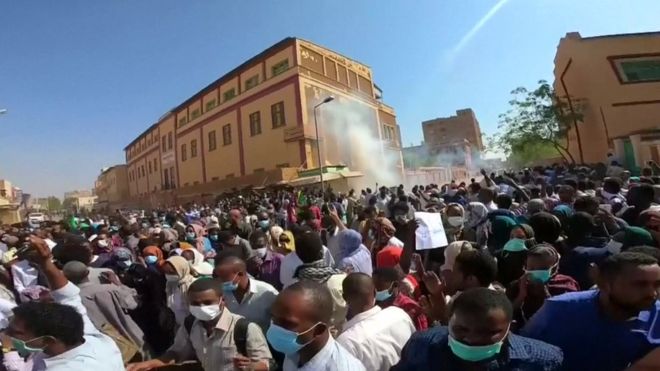
• The photo below speaks volumes about the willingness of the NIF/NCP regime to cling to power by any means. But 30 years of economic mismanagement cannot be corrected by military force—something the regime clearly does not understand. #Sudan #SudanProtests #SudanUprising
• Sudanese are sending a clear message: “Al-Bashir, there is no place for you to hide from the consequences of your tyranny, your brutal savagery, your greed, your destruction of so much of Sudan. Ant the people of Sudan have had enough of you and your ruthless cronies…”
[A particularly important op/ed in The Washington Post on current events in Sudan and their history:
“Recent protests in Sudan are much more than bread riots,” Washington Post
By Nisrin Elamin and Zachariah Mampilly, December 28, 2018
On December 19, the town of Atbara in northeastern Sudan erupted in protest against the military dictatorship that has ruled the country for almost three decades. People took to the streets following a tripling of bread prices to demand “freedom, peace, justice and the downfall of the regime.” But international coverage framing the protests as bread riots obscures the larger political context, misrepresents protesters’ demands and inadvertently supports the regime’s insistence that the crisis can be resolved by simply reintroducing targeted subsidies and stabilizing the Sudanese pound.
What do the protests look like?
Representing potentially the greatest threat to the regime of President Omar Hassan al-Bashir since it came to power in a military coup in 1989, protests have been intensifying. Demonstrators set fire to the ruling National Congress Party’s headquarters. Military police retaliated, using tear gas and live ammunition, killing two students, Tarig Ali and Mohamed Abdeljalil, and wounding dozens. The protests have since spread to at least 23 towns.
The government has declared a state of emergency and imposed curfews in towns where some of the first protests took place. Schools and universities have been closed. National newspapers have been censored or shut down. The Internet has been disrupted, and several phone carriers have restricted access to WhatsApp and other social media sites. Security forces have deployed tear gas and live ammunition against protesters as the death toll reaches 37 and continues to rise.
Sudan’s suppressed opposition and creative grass roots
As Sudanese activists have made clear, these protests are about much more than the deepening economic crisis. Protesters are demanding the overthrow of the ruling NCP party as well as the small group of political and economic elites, including some opposition party leaders, who have held power for decades. Framing this uprising as spontaneous riots against rising bread prices also obscures the ways working-class Sudanese have mobilized against the regime, particularly in smaller towns, which have been hit hardest by recent austerity measures following decades of political neglect and repression.
It is no coincidence that the protests began in Atbara, a town known for its powerful railroad workers union. Sudan has a history of successful revolutions against military regimes, most notably in 1964 and in 1985, in which trade unions and student movements played a pivotal role. The current regime came to power on the heels of the 1985 popular uprising that overthrew Jafaar Nimeiri’s military government and spent much of the 1990s systematically dismantling any opposition. Dissidents were detained and tortured. Unions were turned pro-regime through infiltration and co-optation tactics. Party members were strategically positioned within local governing structures throughout the country. And efforts to organize armed resistance, most notably in the south and Darfur, were met with brutal and sustained counterinsurgency operations.
But the absence of formal trade unions and independent local governing structures did not prevent people from forming alternative grass-roots structures for mobilizing against political repression. Youth movements and independent farmer and worker formations have multiplied over the last decade as people lost faith in established opposition parties and politics. Most notably, from 2012 to 2014, students and the urban poor held a variety of creative protests before being repressed by the regime.
Recent political and economic developments set stage for ongoing protests
In September 2017, Sudan was quietly dropped from the United States’ travel ban list. A few days later, the Trump administration partially lifted sanctions in place for almost 20 years. Analysts have linked these developments to the Sudanese government’s support of the U.S.-backed, Saudi-led war in Yemen. In return for sending thousands of Sudanese soldiers to provide the kind of “boots on the ground engagement” that the Saudis and Emiratis are unwilling to risk themselves, Persian Gulf diplomats stepped up their lobbying efforts on Sudan’s behalf in Washington.
The rapprochement with the United States came at a crucial time for the Bashir regime. Since losing 75 percent of its oil revenue after South Sudan seceded in 2011, the regime has struggled to manage tensions from the worsening financial situation. The government has sought to generate income by securing loans from foreign lenders and attracting investments in its agricultural and mining sectors. In November 2017, Sudanese officials met with the IMF, which recommended that “strengthened revenue mobilization should be accompanied by streamlined tax exemptions and the phasing out of costly fuel and wheat subsidies.”
The regime imposed these austerity measures cautiously and somewhat unevenly, targeting areas outside the capital of Khartoum as it assumed people in small towns were less capable of mobilizing. This is why protests began in Atbara before spreading to other towns and eventually the heavily fortified Khartoum metropolitan area. And it is in these smaller towns that workers, farmers, teachers, small business owners, youth and others have united to demand radical change in response to not only Sudan’s deepening economic crisis but also a political system that has marginalized them for decades.
Four factors make these protests different than previous ones
While the situation remains volatile, protests will likely continue because of the following elements that distinguish these uprisings from earlier cycles.
First, unlike previous mobilizations, the protests did not begin in Khartoum where the regime has spent considerable resources to protest-proof the capital region. Protests in 2012 struggled to gain traction outside of Khartoum, especially in the rural parts of the country. But this time is different, with the locus of action initially rooted in the peripheral regions where existing organized violent movements may lend support to a truly national movement.
Second, some opposition parties and figures seem to be rallying around the protesters. Opposition leader Sadiq al-Mahdi returned last week from a self-imposed exile and has called for an international investigation into the deaths of civilian demonstrators. Two of Sudan’s largest opposition groups, Sudan Call (which includes al-Mahdi’s Umma Party and the Democratic Unionist Party) and the National Consensus Forces, stated they would support the protests. Yet it is not clear whether activists will accept opposition parties’ efforts to lead the protests. Many, especially youth, view opposition leaders as part of the same elite as Bashir and are suspicious of attempts to co-opt their efforts.
Third, the ruling party itself is fragmented and the regime has long been fearful of the army turning against Bashir and his cronies. In both the 1964 and 1985 revolts, low-ranking army members refused to open fire on protesters, swinging the balance of power in the protesters’ favor. Wary of such an outcome, Bashir has banished much of the army from the capital region, instead empowering a secret police, who report directly to him. But in doing so, he may have further strengthened the oppositional energies of the peripheral regions where the protests are centered.
Already there are reports of army personnel removing their uniforms to join the demonstrators.
Finally, there is the broader regional context. The ongoing protests are the latest in Africa’s third wave, which has been ongoing for more than a decade now and has claimed significant victories in Senegal, Burkina Faso, Tunisia and, most recently, in neighboring Ethiopia. Serving as one possible model for resolving the Sudan protests, the Ethiopian regime opted to replace the prime minister rather than further repress its population. However, it remains unclear whether protesters and opposition parties in Sudan would accept any arrangement that allows the hated NCP to retain power, even without the aging Bashir at the helm. Bashir has also built substantive relationships with powerful regional and international actors such as China and the Gulf States.
The deeply political stakes of these protests
Despite all this, it is still risky to underestimate Bashir. During nearly three decades in power, he has never hesitated to unleash violence against his own population, and his rhetoric now is not different. To a group of supporters in Gezira state on Tuesday, Bashir insisted thatthe protests were organized by “traitors, agents, mercenaries and infiltrators who have exploited daily life hardships to sabotage and serve the enemies of Sudan.”
Yet while Bashir was making his speech, an independent coalition of professional associations — including doctors, workers, teachers and journalists — organized a march to the Republican Palace in Khartoum, demanding the regime step down. In response, security forces blocked roads and bridges and used tear gas and snipers to break up the crowds, critically wounding at least three. But protesters remain undeterred, and plans to mobilize more demonstrations across the country continue.
What is clear is that decades of penned-up political frustration is now finding release, which even a reintroduction of bread subsidies is unlikely to solve.
Nisrin Elamin is a doctoral candidate in anthropology at Stanford University.
Zachariah Mampilly is a professor at Vassar College. He is the co-author of “Africa Uprising: Popular Protest and Political Change.” You can follow him on Twitter @Ras_Karya
• This is an extremely useful & informative map, revealing the difficulty in predicting what the results of current popular demonstrations will be. The missing “actor” here is an economy that is in irreversible collapse, something that mere power reconfiguration will not change:
 Map, with corrections, at | https://wp.me/p45rOG-2l0
Map, with corrections, at | https://wp.me/p45rOG-2l0

